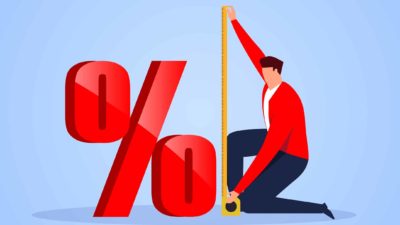The S&P/ASX 200 Index (ASX: XJO) is down 0.5% in early afternoon trade, having recovered from earlier losses of 0.7%.
Unless the benchmark index can engineer a sizeable turnaround, this will mark the third consecutive day of losses, as rising geopolitical threats have fanned investor fears.
Those fears proved all too true over the weekend after Iran launched more than 300 drones and missiles at Israeli targets on Sunday.
With Western officials foreshadowing the strike as imminent on Friday, the CBOE Volatility Index (or VIX) leapt 16% to the highest levels since the Hamas attack on Israel in October. The VIX, which measures the expected volatility of the S&P 500 Index (INDEXSP: .INX) is often used to gauge the level of fear in the markets.
With fears of a broader war on the rise, United States markets, like the ASX 200 today, closed sharply lower on Friday.
The S&P 500 shed 1.5% by the closing bell while the tech-heavy Nasdaq Composite Index (INDEXNASDAQ: .IXIC) fell 1.6%.
What's happening with Iran and Israel?
While few ASX 200 stocks will be directly impacted by the Iranian attack over the weekend, the ripple effects could be significant.
Sunday's strike was in retaliation to the 1 April Israeli airstrike on Iranian embassy buildings in Syria. Top Iranian general Mohammad Reza Zahedi was among the causalities of that attack.
Commenting on the risks, not just for ASX 200 investors but for global peace, Prime Minister Anthony Albanese said (courtesy of ABC News):
It risks greater instability and devastation across the Middle East. We continue to support regional security, including that of Israel. We want to see there be less conflict, not more, and this adds to an incredible risk here.
The good news is that air defence systems and aircraft shot down the vast majority of Iranian missiles and drones before achieving their targets.
However, forces from both the US and the United Kingdom participated in Israel's defence, highlighting the potential for a major escalation of the conflict.
Why this matters for the ASX 200
It may well be the ASX 200 investors have been too complacent about the potential for an escalation in the conflict.
According to Matt Maley, chief market strategist at Miller Tabak (quoted by The Australian Financial Review):
Since gold and oil markets have been pricing in a meaningful impact on the marketplace from this crisis, it's not out of the question that the stock market will follow those other markets and see an outsized reaction before long.
Among the medium-term ripple effects that could impact the ASX 200 and global equities is that a broader war in the Middle East could drive the oil price back above US$100 per barrel.
Higher energy costs would, in turn, drive up the prices of numerous goods and services, stoking inflation and potentially delaying interest rate cuts from the US Fed, the RBA and other leading central banks.
"Investors have pushed back their expectations for the start of the Fed's easing cycle – with geopolitics possibly replacing the Fed as one of the market's top volatility influencers," Jose Torres, senior economist at Interactive Brokers, said.
Looking at this torrid glass as half full, restraint may still be on the horizon.
Saying that the issue with Israel "can be deemed concluded", Iran appears ready to hold fire, so long as Israel doesn't respond to its latest assault.
We trust that all Aussies, whether invested in ASX 200 shares or not, will be among the masses hoping calmer heads prevail.









